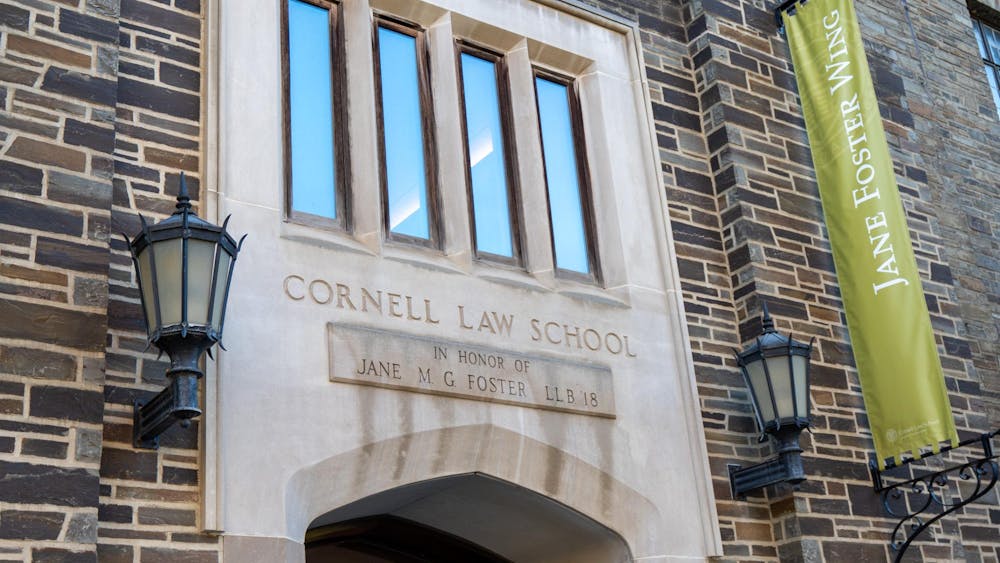From June to October of this year, Canadian wildfires spread to the United States’s midwest and northeast regions, decreasing air quality to unhealthy levels across New York State and Tompkins County. In response to the deadly wildfires, Cornell researchers and Cornell Cooperative Extension members installed a wildfire smoke sensor network in New York Stateto improve future wildfire response.
According to Prof. Alistair Hayden, public and ecosystem health, 28 counties in the state — most of which were rural — lacked county specific air quality data, preventing them from deciding when to respond to wildfire smoke events.
“I was getting calls from people saying, ‘How do I interpret data from a county several counties over? Does that apply to me? How do I make decisions?’ And the answer is that it's really hard to make decisions when you don't have data for your community,” Hayden said.
The community response led Hayden to form the task group that expanded the wildfire smoke sensor network.
Data from the sensor network will support informed decision making that is necessary to protect individual and community health. High wildfire smoke levels increase concentrations of fine particulate matter, which can cause headaches, difficulty breathing, asthma attacks and even death.
Wildfire smoke exposure threatens the health of all people, but there are groups that may be more vulnerable to wildfire smoke events. According to Hayden, vulnerable groups include people who are more exposed, such as transportation and outdoor workers, or are more sensitive to wildfire smoke, such as children and pregnant people.
According to the Environmental Protection Agency, people can protect themselves during a smoke wave by staying indoors, using an air filtration system and wearing N95 respirators, as well as monitoring wildfire and smoke data from Fire AirNow, a real time source of wildfire and air quality data in the U.S.
The data from the newly installed wildfire sensors in New York state will be added to the Fire AirNow map.
“A big focus for us was ensuring that this data goes through a pathway that is accessible to everybody — not just governments, not just researchers,” Hayden said. “We're ensuring that the sensor data is available on Fire.AirNow.gov so that everyone can make their own informed decisions.”
While air quality data can empower New York residents to make more informed decisions about their health and behavior in a wildfire smoke event, barriers to individual action persist.
“There is a need to communicate in a way that is also sensitive to the realities of the limitations that people have in being able to respond,” said Prof. Jeff Niederdeppe, communications. “And it is particularly important to then deploy resources and support to people who are in higher risk areas.”
Helpful resources include clean air spaces and air purifiers. Air quality data must also be comprehensible to community members.
“These sensors report numbers that may not be that meaningful to people,” Niederdeppe said.
AirNow, the government agency that monitors air quality, uses the Air Quality Index to translate and communicate air quality data. Information provided through AirNow is color coded, which can be a valuable secondary cue to help people interpret the data and remember categorizations, especially for unfamiliar indicators, according to Niederdeppe.
According to Hayden, it will be increasingly important for officials to clearly communicate air quality data as wildfires are expected to become more prevalent due to climate change. As a result, New York residents will likely experience more episodic wildfire smoke exposure events.
According to Niederdeppe, data availability may support calls to action not only for individuals but for governments, companies and lawmakers to reduce the likelihood of wildfire-related risks.
“There are broad ways to think about preparedness for addressing wildfires that deal with issues related to generating support for activism and activities to address climate change,” Niederdeppe said. “Part of that means putting pressure on elected officials to take action.”
It is difficult to communicate about the importance of wildfire preparedness and mitigation during an acute wildfire event — according to Niederdeppe, communication about wildfire prevention strategies must happen before wildfire crises occur.
According to Hayden, collecting data to measure the magnitude of wildfire smoke effects is the first step to creating effective strategies. Across the U.S., researchers have been improving sensor density and quality to measure short and long term air quality.
“There's a lot of work that needs to be done to determine what solutions are but it's a very exciting time because there's a lot of energy from a wide variety of groups to create those solutions,” Hayden said.
Taylor Rijos can be reached at tlr65@cornell.edu











